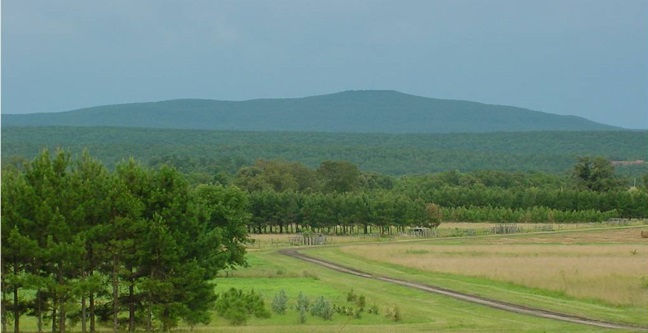How best to raise trees and forage crops, graze pasture and harvest both hay for livestock and trees for lumber – all off the same field?
Such multitasking is called silvopasture, or agroforestry, and Alan Franzluebbers, a USDA research ecologist and soil scientist, reported in a webinar recently on his team’s nine years of trial and error on how to do those things on 17 acres at the Center for Environmental Farming Systems in the Neuse River lowlands near Goldsboro, N.C.
The silvopasture research was a trial not by fire, but often by flood and drought. “We had four of those events in the first seven years,” Franzluebbers said, yet the loblolly pine, longleaf pine, and cherry bark oak they planted all performed well under the circumstances.
The researchers planted rows of those trees separated by wide “alleys” (12 or 24 meters apart) where soybeans and corn were sown in the early years, often to be destroyed by flooding. Then, about five years ago, the team more successfully reseeded the alleys entirely to ryegrass, and in following years to a blend of native, warm-season grasses (switchgrass, big bluestem, Indiangrass and eastern gammagrass) for grazing in some alleys and for hay production in others.

Alan Franzluebbers, USDA
Franzluebbers notes that many farms have underutilized woodlands, yet there are plenty of operations "where silvopasture makes sense." Management is needed in woodlands where livestock will graze, because shade in mixed woodland/pasture spells comfort and protection for cattle, especially in hot weather.
“Trees should be a part of an integrated system on a farm,” and getting started with silvopasture, Franzluebbers said, begins by either thinning woodlands, opening the ground to sunlight to develop pasture or grow forage crops, or, alternatively, planting trees in cropped fields to provide shade, produce timber, fruit or nuts, reduce erosion and other purposes.
“We tried to look at the tradeoffs between the trees, crops and pasture,” he said. Field-edge rows of trees, for example, can bring important relief from wind damage and erosion even in the Carolinas' coastal plain, he said, because of the high winds that often whip in from the Atlantic.
Some of Franzluebbers’ principal findings and recommendations:
- “Managing warm-season grasses in silvopasture is really, really important,” he said. It’s a balance of letting enough light penetration for forages to thrive, he said, and selection of grass species is critical. "Warm season grasses thrive under full sunlight. So anytime we have trees out there, we’re going to limit (forage growth).”
- Loblolly pine, a native tree and the region’s foremost timber species, “did best on all soils . . . the most prolific species," he said.
- After nine years of letting the trees' needles and leaves litter the alleys, “the elevated organic (soil) carbon concentration that we expected early in the study was occurring” in the top two inches of soil, especially in soil nearest to the tree rows. So far, carbon has not increased further into the soil.
- “A silvopasture system doesn’t have to be so many trees per acre. There is no prescription . . . finding the right balance for what you want achieve . . . is the important thing."
- While silvopasture can give grazing animals an ideal setting for food and comfort, the farmer must commit to a firm grazing rotation plan or the trees are bound to suffer.
Producers pondering silvopasture endeavors or planning to expand agroforestry systems can check out the University of Missouri’s online Agroforestry in Action Webinar Series, which includes Franzluebbers’ report. Another professional team, the Northeast/Mid-Atlantic Agroforestry Working Group, has also compiled a series of webinars geared to those regions of the country.
Also, note the Association for Temperate Agroforestry is holding its 16th Biennial Conference next June at Oregon State University, Corvallis, Ore.
For more news, go to: www.Agri-Pulse.com


